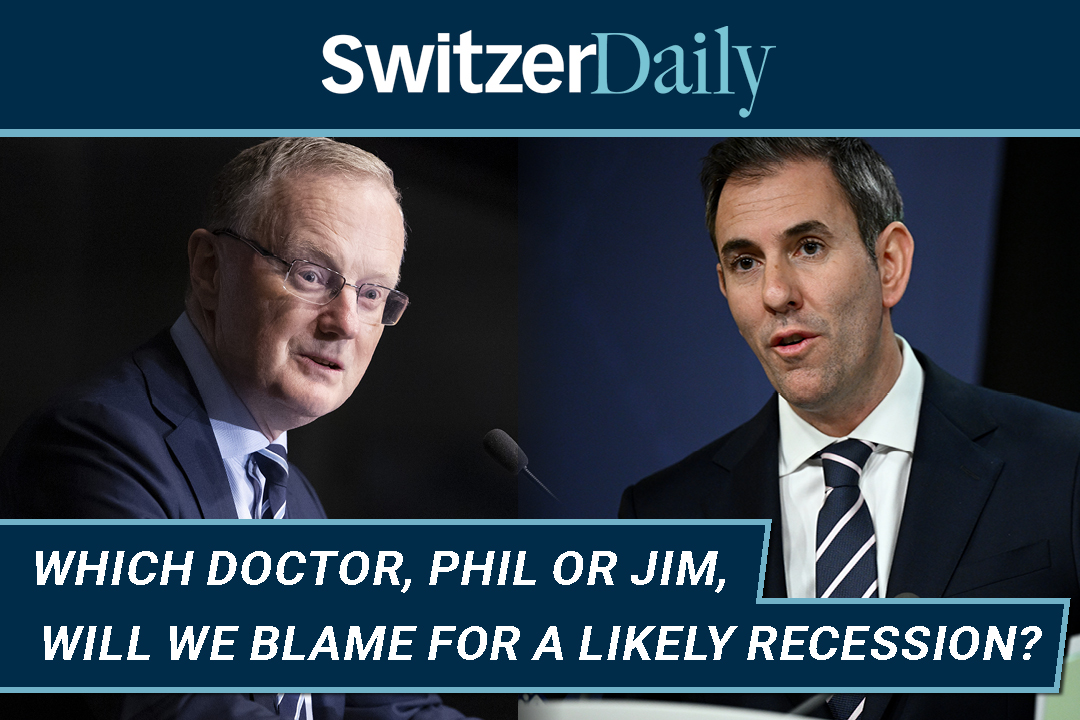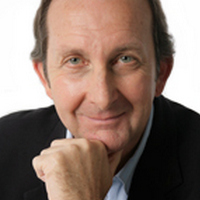

In six months’ time, the inedible fruits of the labours of Dr Phil Lowe and Treasurer Jim Chalmers are bound to be on the table. And yesterday we saw the economic reasons why I think both men will be accused of two different contributions to an economy in recession: businesses going bust and Aussies losing jobs.
We learnt about three big economic problems yesterday that point the finger of blame at Dr Phil, Dr Jim and big business for the inflation we’re enduring, and then the recession threat, which is looking increasingly likely.
Here are those three troubling issues for the economy and the people who live in it — us:
Let’s deal with this new focus for the big cause for inflation — corporate profits — which the Paris-based Organisation for Economic Cooperation and Development (OECD) says was the bigger contributor to inflation compared to wages.
Early in 2022, inflation was driven more by businesses trying to make up for the losses that lockdowns brought in 2020 and 2021. We saw that the prices we paid for cars, airline tickets, energy and so on spiked and corporate profits were the big driver on that inflation.
That said, it was not all local profits, as we import a lot of stuff used by business and households, and prices on these products were pushed up because of lockdowns in supplying countries such as China.
But in the second half of last year, wages started to kick in, as inflation topped out at 7.8% but the focus on greedy businesses isn’t just an Australian witch hunt.
“This week, the president of the European Central Bank, Christine Lagarde, conceded to a parliamentary committee that there appeared to be cases of increased corporate profits making the European Union’s inflation problems worse,” writes the SMH’sShayne Wright. “The OECD, which examined 15 nations including Australia, found in recent years there had been more frequent simultaneous contributions to inflation from both profits and business labour costs. It found that a larger part of higher profits was contributing to inflation from the mining and utilities sectors of economies.”
Wright captures the causes of recent inflation with the following: “In Australia’s case, almost all the inflation recorded in the March quarter of 2022 – the largest three-month rise in inflation in more than three decades – was attributable to company profits. Labour costs, such as wages, did not add to inflation.”
By the end of the year, both profits and wages were causing the inflation, and the sectors that have charged the most to drive up prices were agricultural operations and energy businesses.
This profits push on inflation isn’t what the RBA is worried about, arguing it was more the pushes from higher costs, for example from oil price surges because of the Ukraine war, that were the big drivers of inflation.
That said, checking corporate prices is a job for Dr Jim, not Dr Phil, and ultimately the Treasurer could cop some blame if big business pricing and the inflation it has partly created means interest rates stay high, dragging us into recession.
On the second problem of a looming wave of wage rises that could turn the current inflation rate, which is falling, into a hard-to-beat wage-price spiral inflation problem. Jim has to give up his reasonable nice guy approach and start to become like a less likeable Paul Keating, who could stick it to his own colleagues as he did to the likes of John Howard and Dr John Hewson. If we end up with a wage-price spiral, Dr Jim could become like dead man walking Dr Phil.
Finally, rightly or wrongly, Dr Phil will be pilloried for raising interest rates 12 times in an historically short time. Crucially, as we saw this latest rate rise, we learnt that the economy’s GDP growth had slowed to 0.2%, which has many asking if a negative number and a recession on the horizon.
This is how AMP economist Diana Mousina looked at these March quarter growth numbers: “Australia’s GDP growth rose by just 0.2% in the March quarter (below consensus and our own forecasts of a 0.3% lift) which takes annual growth in GDP to 2.3% (see the chart below).
“GDP has slowed considerably over the past year (this time a year ago GDP was up by 3.1%) and is set to weaken further due to the tightening in monetary policy and the subsequent slowing in consumer spending, continued drag from residential construction and a poorer outlook for business investment.”
And by the way, this growth number is for the months January to March, but we’re now in June. And by September, we might have had two negative quarters, which would mean we are in recession!
It’s time for Dr Jim to start playing hardball and Dr Phil to start doing nothing because he’s done enough to create the recession that will kill inflation and jobs.